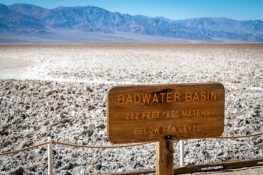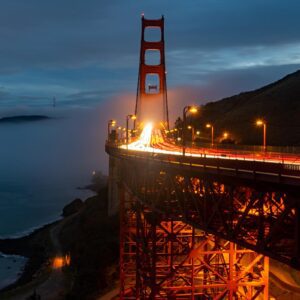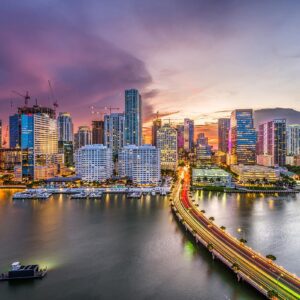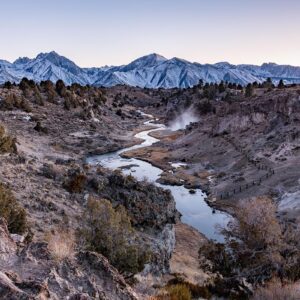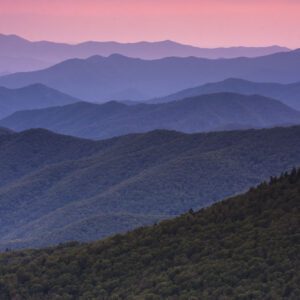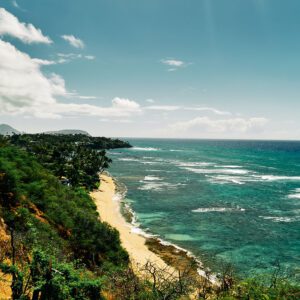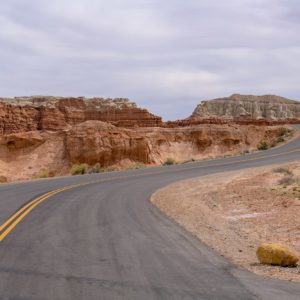Glacier Bay National Park and Preserve

Image via Wikipedia
Glacier Bay was first explored in-depth by naturalist John Muir in 1879. At that time, the glaciers extended much farther into the bay. Since then, the glaciers have dramatically retreated, revealing a rich ecosystem of newly exposed land and waterways. The park was designated a national monument in 1925 and later became a national park and preserve in 1980. Today, it serves as a crucial site for scientific research on climate change and glacial movement.
Geography and Landscape
The park features more than 50 named glaciers, with seven tidewater glaciers that actively calve ice into the bay. The landscape is constantly changing as glaciers advance and retreat, shaping fjords, valleys, and rivers. Some of the most famous glaciers include:
- Margerie Glacier – A towering, actively calving glacier that is one of the park’s most famous sights.
- Johns Hopkins Glacier – Known for its deep blue ice and dramatic setting.
- Lamagia Glacier – A smaller but significant glacier with frequent ice calving.
Sub-Locations and Highlights within Glacier Bay National Park
Bartlett Cove
As the main entrance to Glacier Bay National Park, Bartlett Cove is the only developed area in the park and the starting point for most visitors. It houses the park’s headquarters, a visitor center, and the Glacier Bay Lodge. Bartlett Cove is a great place to explore on foot, offering easy hiking trails, kayaking opportunities, and cultural exhibits about the Huna Tlingit people who have inhabited the region for centuries.
Glacier Bay Inlet
The heart of the park, Glacier Bay Inlet, is home to some of the most impressive tidewater glaciers and breathtaking scenery. Tour boats and cruise ships frequently traverse these waters, allowing visitors to witness towering ice walls crashing into the sea. The inlet is surrounded by rugged cliffs and forests teeming with wildlife, including bald eagles and mountain goats.
Russell Island
Russell Island is a lesser-known gem within the park, featuring secluded coves and incredible wildlife viewing opportunities. The island is surrounded by nutrient-rich waters, making it an excellent place to spot humpback whales and sea lions. Kayakers and small boaters often visit Russell Island for its remote, serene experience.
Muir Inlet
Muir Inlet, named after naturalist John Muir, is one of the most historically significant parts of the park. It was here that Muir conducted much of his research on glacial activity. Today, the inlet offers a quieter alternative to Glacier Bay Inlet, with fewer visitors and an equally stunning landscape. The retreating glaciers in Muir Inlet have left behind rocky, vegetation-rich terrain that supports a growing population of bears and other wildlife.
West Arm
The West Arm of Glacier Bay includes several of the park’s most impressive glaciers, including Johns Hopkins Glacier and Gilman Glacier. The area is known for its deep fjords, towering ice walls, and rugged mountain landscapes. Many wildlife species thrive here, including harbor seals, which use the icebergs as safe havens for giving birth to their pups.
Dry Bay
Located in the preserve section of the park, Dry Bay is a unique ecosystem where the glaciers have fully retreated, leaving behind a vibrant environment rich in plant and animal life. It’s an excellent spot for fishing, as the area is home to healthy populations of salmon and trout. This region also holds cultural significance for the Indigenous communities that have historically relied on its resources.
Wildlife
Glacier Bay is home to a wide variety of wildlife, both marine and terrestrial. Some of the incredible species you may encounter include:
- Humpback Whales – These massive creatures migrate to Glacier Bay in the summer to feed.
- Orcas – Often seen in the waters hunting for fish and seals.
- Brown and Black Bears – Commonly seen along the shores and in the forests.
- Sea Otters – Playful marine mammals often spotted floating on their backs.
- Mountain Goats – Found on the steep rocky slopes of the park.
- Bald Eagles – Majestic birds frequently seen soaring above the park’s waterways.
Activities and Exploration
Visitors to Glacier Bay can experience the park in various ways, whether by boat, kayak, or on foot. Some of the most popular activities include:
Boat Tours of Glacier Bay
One of the best ways to see Glacier Bay is by boat. Many visitors explore the park via cruise ships, tour boats, or private charters. These tours provide a front-row seat to the dramatic landscapes and wildlife of the region.
Kayaking around Glacier Bay
For a more intimate and adventurous experience, kayaking through the park allows visitors to explore secluded coves, witness glaciers up close, and encounter wildlife in a peaceful setting.
Hiking at Glacier Bay National Park
There are several trails within the park, ranging from short, scenic walks to challenging backcountry hikes. Popular hikes include:
- Forest Loop Trail – A gentle 1-mile loop through temperate rainforest.
- Beach Trail – A moderate hike offering stunning views of the bay.
- Mountain Trail – A more challenging route leading to panoramic vistas.
Best Time to Visit
The best time to visit Glacier Bay is during the summer months, from May to September, when the weather is mild, and wildlife is most active. Summer also offers the best opportunities for boat tours, hiking, and kayaking. However, the park remains open year-round, and winter visitors can experience a quieter, snow-covered landscape.
Conclusion
Glacier Bay National Park and Preserve is a true Alaskan wilderness, offering unparalleled beauty, adventure, and wildlife encounters. Whether you explore by boat, hike through the forests, or paddle through the icy waters, a visit to this incredible park is an unforgettable experience.
Nearby Locations:
Lists & Guides Including Glacier Bay National Park and Preserve
Maps & Directions:
Get Driving Directions:
Glacier Bay National Park and Preserve, Alaska
This time, it's OK to leave a trace (Review)
There are no reviews yet. Be the first one to write one.
